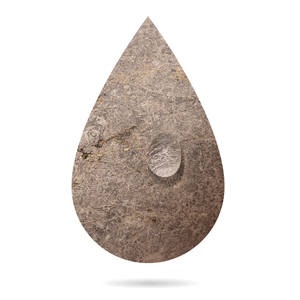With over 30 years of experience, Sicer is a benchmark in the ceramics industry, specializing in the production of innovative materials for ceramic glazing and decoration, such as frits, glazes, grits and inks. In recent years, the company has increasingly focused on developing sustainable solutions, addressing the growing demand for environmentally friendly products that maintain high quality and performance standards.
In an era where sustainability has become a key focus across all industries, the ceramics sector is also evolving toward technologies and materials that minimize environmental impact. In this article, we explore Sicer’s innovations in eco-friendly ceramic inks and glues, two key product ranges that are helping to shape a more sustainable future for the industry.
The challenge of sustainability in the ceramics industry
The ceramic sector has always been a pillar of the manufacturing industry, renowned for the aesthetic and functional excellence of its products. However, the traditional production process presents significant sustainability challenges. One of the main issues is the intensive consumption of energy, necessary to power high-temperature kilns, which represents one of the primary sources of CO₂ emissions. This impact is further exacerbated by the use of non-renewable raw materials, such as clays and feldspars, often extracted through intensive mining.
Waste management also poses a significant challenge. Production waste, including glaze and ink residues, can be difficult to treat and dispose of, posing potential environmental risks. Furthermore, decoration and glazing processes, if not optimized, can release volatile organic compounds and fine dust, contributing to air pollution.
Sustainability challenges extend beyond direct environmental impact; there is also increasing pressure from stricter regulations and civil society. Internationally, regulations such as the UN 2030 Agenda and the European Green Deal aim to reduce industrial emissions, incentivizing the adoption of circular practices and less impactful materials. At the same time, end consumers, increasingly aware of environmental issues, demand products that reflect a concrete commitment to sustainability.
To meet these challenges, the ceramic sector must undergo a radical transformation, adopting innovative technologies and rethinking the materials used. In this context, the experience and innovation of companies like Sicer represent a virtuous example. Through the development of eco-friendly solutions, the company demonstrates how it is possible to combine quality and design with a responsible approach to the environment.
Sicer, in particular, has placed sustainability at the heart of its strategy, investing in research and development to design more sustainable ceramic materials and implementing production processes that reduce environmental impact. From the adoption of technologies such as photovoltaics for energy savings, as well as the reuse of almost all production waste, the company has committed to redefining industry standards, contributing to the creation of a greener and more resilient industrial model.
Innovation and sustainability: Sicer’s water-based digital glues for green ceramics

Ceramic glues play a crucial role in the glazing process, ensuring optimal adhesion of glazes and grits to the tile surface. However, many traditional glues contain chemical additives and solvents that can release harmful compounds into the environment during application. In response to these issues, Sicer has developed a range of eco-friendly ceramic glues, completely odorless and low-emission, which significantly reduce emissions of volatile organic compounds (VOCs), aldehydes and other harmful substances during firing in ceramic kilns, contributing to a cleaner and safer production environment.
Four main formulations of Sicer’s water-based digital glues
- SCD3001H (glossy): a natural glue containing a flux that increases bonding power and improves the spreading of the grit, ensuring uniform and transparent surfaces. It is particularly suitable for obtaining glossy finishes and for waterproofing the ceramic support before applying the glass. It can also be used for applying matt grits with geometric or stone-effect graphics.
- SCD3011H (glossy): ideal for applications requiring energetic fluxes, with high bonding power and excellent aesthetic performance, to obtain high-quality surfaces with minimal emissions. This glue contains a flux with a high softening temperature, particularly suitable for supports that have degassing problems.
- SCD3010H (semi-matt): a universal glue, ideal for both the application of full-field glossy grits, to be lapped or oven-fired (brick) and for the application of matt relief grits with specific graphic subjects.
- WATER BASED matt SCD3991H: formulated to create high-quality opaque ceramic effects, this glue allows you to obtain natural surfaces without glossy halos in combination with matt granites. It is designed to ensure uniform spreading and a very low environmental impact. It has been specifically studied to avoid tone shifts even when applied directly to colored bodies.
Thanks to their innovative hydrocompatible composition, these glues allow the application of high grammages (up to 80 g/m²), guaranteeing excellent results without the need for plant modifications such as the addition of post-combustors. They are also distinguished by their long drying times, which facilitate the production process and ensure optimal adhesion even in complex operating conditions.
Sicer Lower emissions, higher performance: Sicer’s .LE Low Emission digital ceramic inks
Sicer’s patented .LE LOW EMISSION series of ceramic inks represents a fundamental innovation for reducing the environmental impact of the ceramic industry. Made with advanced eco-solvents, these digital inks significantly reduce harmful emissions during the firing process. Certified data highlight the following positive results:
- 70% reduction in odoriferous units
- 60% reduction in formaldehyde

Additionally, the total organic carbon (TOC) has been reduced by 20%-25%, improving the control of stack emissions.
Designed to completely eliminate odoriferous components, the .LE series inks are compatible with major digital technologies and offer high performance in terms of graphic quality and lubricating properties, necessary for optimal machine management. The range includes primary colors and concentrated bases, allowing for advanced customization to meet customers’ aesthetic and production needs. This range represents a perfect balance between sustainability and technical performance, contributing significantly to reducing air pollution in the ceramic district.
The future of ceramic sector and Sicer’s role
Sustainability is no longer an option, but an indispensable necessity for the future of the ceramic sector. In an increasingly environmentally conscious global context, Sicer positions itself as a pioneer in the adoption of innovative solutions that combine high performance and reduced environmental impact. Thanks to its consolidated experience and continuous commitment to research, the company has developed products that not only meet industry standards but also anticipate the needs of a rapidly evolving market.
The eco-friendly inks and glues of the .LE series are just one tangible example of the contribution that Sicer is making for a more sustainable future. Continuous innovation in technology and the choice of low-impact materials are part of a global strategy aimed at reducing emissions, improving production efficiency and guaranteeing a product quality that respects the environment and people’s health. Furthermore, the company promotes a culture of sustainability that involves not only its products but also business processes and collaborations with partners and customers.
Sicer is aware that the road to a greener ceramics industry is still long, but its constant commitment to research into innovative solutions and the promotion of cultural change is what will make the difference.
Discover the products








